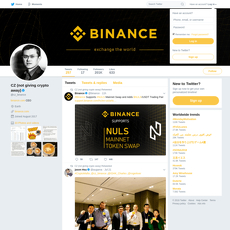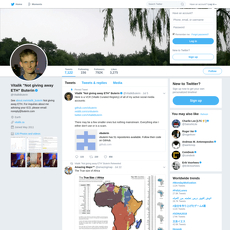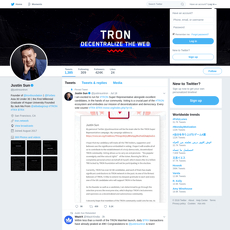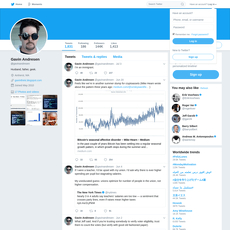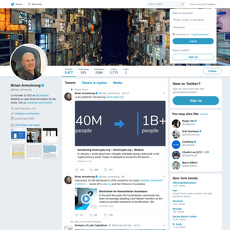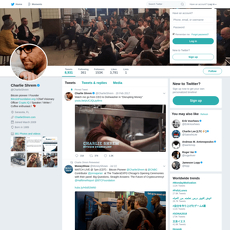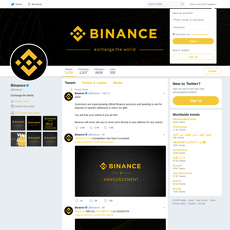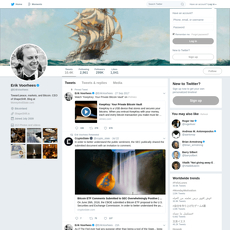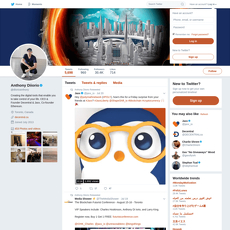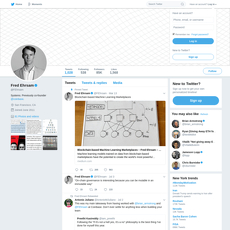Jed McCaleb Review
Jed McCaleb
twitter.com
Jed McCaleb Review Guide: Everything You Need To Know (+ FAQ)
Wondering how to separate the real story of Jed McCaleb from the noise, tweets, and tribal wars? If you’ve ever asked how he got rich, what crypto he still owns, why he left Ripple, or what he’s building now, you’re in the right place.
Follow Jed on X/Twitter here if you want his direct updates. I’ll keep everything else simple, sourced, and free of spin.
Promise: I’ll map the timeline, explain the money questions in plain English, compare Ripple vs. Stellar without fan wars, and point you to places where you can verify claims yourself.
The common headaches when researching Jed McCaleb
Most articles repeat the same half-facts or mix outdated info with hot takes. Here are the usual pain points:
- XRP allocation myths: You’ll see conflicting numbers about how much XRP Jed received early on and what he was allowed to sell.
- Sale confusion: People still claim he’s “dumping” XRP today, even though his well-known “tacostand” wallet reached zero in mid-2022 (you can check public explorers for that history).
- Ripple vs. Stellar: Technical and governance differences often get boiled down to slogans. The nuance matters.
- Outdated profiles: Many pieces ignore what he’s building now in space with Vast—so readers miss what actually drives him today.
- Biased narratives: Community camps frame the same facts in totally different ways, which is why neutral, timestamped sources help.
Quick example of why this matters: searching “Jed XRP selling” still surfaces old threads and charts with no dates. When you add a simple date filter—or cross-check known sales schedules—you get a totally different picture. That’s the kind of sanity check I’ll give you throughout this guide.
What I’ll deliver in this guide
- A clean timeline: From early peer-to-peer projects to Ripple, Stellar, and space.
- Money questions, simplified: How he likely built his wealth, what’s public about holdings, and what isn’t.
- Ripple vs. Stellar—minus the tribalism: What actually changed in tech and governance, and why it mattered for adoption.
- Verification links: Where to cross-check allocation, sales, and current roles without guessing.
- A no-drama lens: Clear wording, time-bound facts, and notes when something is opinion or industry chatter.
Who this guide is for
- Investors checking narrative risk, founder allocations, and market impact.
- Builders curious about decentralization choices and how governance shapes partnerships.
- Crypto fans who want a straight, sourced answer to “Why did he leave Ripple?”
What you’ll learn (fast)
- Key milestones: The short list that explains why he still matters in payments and beyond.
- How he made his money: The role of the original XRP allocation, constraints, and sales—kept factual and time-stamped.
- What he owns (publicly known): What’s on record and what isn’t, without speculation.
- Why Stellar exists: The technical and philosophical shift from Ripple’s approach.
- What Vast is: Artificial-gravity space stations and why that pivot tells you a lot about his priorities today.
- Market impact: How his actions have (and haven’t) moved headlines and sentiment.
Ready for the quick snapshot that ties it all together? Up next, I’ll show why Jed McCaleb still matters in crypto and how his early choices set the stage for everything that followed.
Jed McCaleb at a glance: Why he matters in crypto
Jed McCaleb is one of those rare builders who keeps standing where the infrastructure shifts. From peer-to-peer networks to the first mainstream Bitcoin exchange, to two of the most influential payment rails in crypto, and now private space stations—his choices echo through markets and debates long after he moves on.
- 2000–2006: Built eDonkey2000, an early file-sharing network used by millions—proof he could design large-scale, decentralized systems.
- 2007–2011: Created Mt. Gox (originally for trading Magic: The Gathering cards), then pivoted it to Bitcoin before selling it in 2011.
- 2012–2013: Cofounded what became Ripple; helped shape XRP’s early vision and distribution, bringing bank-grade settlement ideas into crypto.
- 2014–present: Started Stellar, steered it toward open, federated consensus and public-interest financial access.
- 2021–present: Founded Vast to build artificial-gravity space stations—an even bigger bet on complex systems and long timelines.
“Builders take the heat, break new ground, and keep moving. The noise fades. The rails remain.”
Early builder phase: eDonkey and Mt. Gox origins
Before crypto, there was eDonkey. Launched in 2000, eDonkey2000 showed how fast information could move when you strip out single points of control. It became one of the largest P2P networks of its era. Legal pressure eventually forced a shutdown and a settlement in 2006, but the core lesson was loud and clear: distribution changes power. If you want to understand Jed’s later choices in crypto, start here.
Then came Mt. Gox. In 2007, it started as a Magic: The Gathering marketplace. In 2010, it became a Bitcoin exchange—right before Bitcoin’s first big breakout. Jed sold Mt. Gox to Mark Karpelès in 2011, years before the infamous 2014 collapse. This matters because it shows his pattern: build the bridge early, then hand it off when it starts serving millions. That rhythm repeats.
- Real-world takeaway: he builds rails—not just apps. That’s why his decisions still ripple into markets.
- Receipts and context: eDonkey2000 overview, Mt. Gox timeline.
Ripple cofounder era: XRP creation, allocation, and early vision
In 2012, he cofounded what became Ripple (originally OpenCoin) with a bold idea: take the best parts of crypto—instant, borderless settlement—and connect them to banks, payment companies, and market makers. The network’s digital asset, XRP, launched with a fixed supply of 100 billion units and a significant portion earmarked for founders and the company. That initial allocation is the root of a decade of debates: incentives, decentralization, and the optics of founder holdings.
On the tech side, Ripple used a bespoke consensus model aimed at high throughput and low latency for payments. If you like receipts, the Ripple Protocol Consensus Algorithm whitepaper is the canonical reference for that design. On the culture side, the strategy prioritized enterprise relationships first—banks and payment firms—before grassroots adoption.
His role and the early distribution would later lead to formal agreements around sales and communications. That part is important for investors and gets its own spotlight soon. If you want to see the public paper trail, bookmark Ripple’s 2016 note on the settlement framework: “Ripple and Jed Reach Agreement to Resolve Issues”.
The Stellar pivot: New chain, new mission
In 2014, he launched Stellar with a different compass. Instead of a company-first approach, Stellar leaned into a nonprofit foundation model and a consensus design built for open participation. After an initial start that reused Ripple-like code, the network shipped a new protocol in 2015: the Stellar Consensus Protocol (SCP), authored by Stanford’s David Mazieres. If you care about the science, read the paper: “Stellar Consensus Protocol: A Federated Model for Internet-level Consensus”.
The philosophy shift was just as big as the code shift. The network emphasized public-good infrastructure—cheaper remittances, stablecoin rails, and humanitarian payouts—while keeping governance under a nonprofit that could prioritize access and neutrality. In practice, that produced tangible use cases:
- Cash-in/cash-out ramps: Partnerships like MoneyGram Access helped move funds between cash and digital assets using USDC on Stellar.
- Aid distribution: Programs like Stellar Aid Assist showed how fast, transparent disbursements can work at scale.
Different code. Different governance. Different playbook. That’s why comparisons between Ripple and Stellar still ignite crypto Twitter—same origin story, very different destinations.
Beyond crypto: The Vast chapter
Most founders pick a lane. He didn’t. In 2021, he started Vast to build artificial-gravity space stations. Vast acquired Launcher in 2023 and announced plans with SpaceX to send up Haven‑1, a commercial station designed for long-duration human stays. The throughline is obvious: complex systems, big constraints, heavy infrastructure—exactly the kind of problems he’s always chased.
“We’re building artificial-gravity space stations to enable people to live and work in space.” — Vast
If you’re wondering whether this is a pivot or a pattern, I’d say it’s the pattern. Build the rails early, make them work in the real world, then take the same bias for shipping into the next frontier.
Here’s the question everyone asks next: how much of his wealth came from XRP, what does he still hold, and what agreements shaped those sales? I’ve got the receipts—timelines, sources, and what actually matters if you’re an investor—coming up next.
Money questions answered: How he got rich and what he owns
How did Jed McCaleb get rich?
I keep this simple: the bulk of his wealth came from an early founder allocation of XRP and the structured sales that followed over several years. Well-known profiles, including Forbes, have repeatedly framed his net worth around that XRP stake and its monetization, with smaller contributions from earlier projects and equity stakes.
- Founders’ allocation: When Ripple created 100B XRP, a founders’ pool was split among the earliest contributors. Multiple reports cite that Jed’s share was approximately 9 billion XRP. See coverage and timelines in outlets like The Block and background in Forbes.
- Programmatic sales, not a one-off exit: He didn’t “cash out” overnight. Sales were executed under legal agreements that throttled the pace (more on those below), turning his allocation into a multi-year income stream.
- Other sources exist, but smaller: Earlier wins like eDonkey and the creation/sale of Mt. Gox add context to his career, but they’re not the primary reason his name shows up in wealth lists. XRP is.
“In crypto, people don’t get rattled by wealth; they get rattled by supply.”
That line isn’t just rhetorical. Founder-controlled supply sits at the heart of most “how did he get rich?” debates—Jed’s story is a textbook case.
What crypto does Jed McCaleb own?
Publicly, here’s what’s clear, and where the trail stops.
- XRP (historical): He received a large allocation as a Ripple cofounder and sold it over years under legal constraints. His well-known selling address tacostand (rEb8TK3gBgk5auZk…) was emptied in July 2022, as reported by The Block and CoinDesk.
- XLM (Stellar): He co-founded Stellar and has been a key figure in the ecosystem, but there is no verified, public, on-chain wallet that he personally claims today. Important distinction: the Stellar Development Foundation (SDF) manages the network’s treasury; that is not his personal stash. SDF famously reduced supply by 55B XLM in 2019, but again—that’s institutional, not personal.
- Other assets: Like most high-net-worth builders, he could hold BTC, ETH, or private equity stakes. None are publicly disclosed in a way that meets a verifiable, on-chain or audited standard.
If you want a single headline here: his XRP is gone (sold), his XLM position isn’t publicly confirmed, and anything else is guesswork. The Block’s ongoing profiles have been among the cleanest at separating known facts from speculation (The Block).
XRP sales: timelines, agreements, and industry chatter
Here’s the factual skeleton investors care about, minus the noise:
- 2014: He announced plans to sell XRP. It caused a stir. Legal back-and-forth ensued, ending in structured agreements that governed pace and venues of sales.
- 2016–2017: Ripple and Jed finalized/updated a settlement with volume-based caps on his sales—limits tied to a percentage of XRP’s daily market volume. This is why you’d see steady, programmatic outflows instead of one giant market order. The throttle changed over time according to the agreement terms (covered repeatedly in legal reporting and industry recaps).
- 2018–2021: Sales scaled with market conditions. On-chain watchers like Whale Alert cataloged significant annual totals and patterns (Whale Alert blog).
- July 2022: The tacostand wallet hit zero. Headlines everywhere: The Block, CoinDesk. The long-running “founder overhang” narrative for XRP, at least from Jed’s allocation, effectively ended.
A few clarifications that matter:
- He wasn’t free to market-dump: The agreements capped daily selling as a percentage of market volume—designed to reduce shock. Exact percentages appeared in legal docs referenced by press at the time; outlets consistently framed them as volume-based throttles.
- On-chain ≠ intent: Transfers from a founder address don’t always mean immediate market sells. Some movements were to exchanges for programmatic selling; others were internal or scheduled. Trackers like XRPSCAN and Bithomp helped the community separate signal from rumor.
What this means for investors
I’ve watched this movie across dozens of tokens: large founder allocations create a persistent “supply overhang” story. That doesn’t automatically kill a network, but it does shape short-term order books and headlines.
- Don’t react to a wallet label; react to constraints: If sales are capped by volume, the sustainable sell-pressure is bounded. Context beats panic.
- Model unlocks like you model inflation: Treat founder distributions, treasuries, and escrow releases as a predictable “tax” on liquidity. Messari and other research shops often show that known unlock schedules are digested better than surprise emissions.
- Focus on three dashboards:
- XRPSCAN or Bithomp for XRP wallet flows.
- Stellar.org and SDF updates for treasury policy and distributions.
- Whale Alert for large movements, cross-checked with exchange inflow data.
- Remember what changed: Jed’s XRP selling ended in 2022. Any ongoing supply narrative for XRP now hinges more on Ripple’s escrow and ecosystem demand than on a single founder’s wallet. For XLM, look to SDF policy, not assumptions about Jed’s personal holdings.
“Markets hate surprises, not sales. When supply is scheduled and signposted, it gets priced in.”
Here’s the emotional truth behind the spreadsheets: what spooks people isn’t that a founder gets paid; it’s the feeling that someone else controls the exit door. The next logical question is the one that actually decides that power: who controls the network—technically and institutionally—when founders disagree? Keep going, because that’s where the split story gets real.
Ripple vs. Stellar: What really changed when Jed left?
Strip away the tribal noise, and the split comes down to a question that still matters for payment networks today: Who gets to steer the chain—one company or a web of independent actors? The answer shaped everything from validator design to business models and even public perception.
Why did Jed McCaleb leave Ripple?
The short version: he pushed for a more open validator model and a mission that prioritized neutral rails anyone could build on. That philosophy is what birthed Stellar. Ripple stayed focused on enterprise rails with a curated validator approach; Stellar went for a federated trust model and NGO-style stewardship.
Or, as Stellar’s own message puts it:
“Stellar is an open network for storing and moving money.” — Stellar.org
That “open” word wasn’t just branding—it meant a different consensus design and community governance from day one. If you’ve ever felt the tension between speed, compliance, and decentralization, you’ve felt the same trade-offs they argued about internally.
For context-driven reading on the split and motivations, check neutral explainers like Investopedia’s Ripple vs. Stellar primer and Stellar’s original launch materials.
Consensus and governance: XRP vs. XLM
Under the hood, the networks chose different ways to reach agreement and decide who’s “in.” That choice influences security assumptions, decentralization, and who feels comfortable building on top.
- XRP Ledger (Ripple era roots): RPCA + UNL
Uses the Ripple Protocol Consensus Algorithm (RPCA). Validators consult a Unique Node List (UNL)—a curated list of trusted validators. Historically, the UNL was closely associated with Ripple; today the XRPL Foundation maintains a default UNL, and operators can choose their own lists. Ripple does not operate a majority of validators on the default UNL as of recent public snapshots, but the default list still shapes network norms. See the XRPL consensus overview in Ripple’s docs: xrpl.org. - Stellar (SDF stewardship): SCP + federated trust
Runs the Stellar Consensus Protocol (SCP), a Federated Byzantine Agreement (FBA) design by David Mazières. Instead of one canonical list, participants choose quorum slices—overlapping sets of validators—so consensus emerges from a web of trust. This aims for decentralization without a central gatekeeper. Primary source: the SCP paper (peer-reviewed and widely cited).
What this means in practice:
- Decentralization lens: XRPL’s default UNL provides predictable coordination (good for regulated partners), but critics see list curation as soft centralization. SCP’s federated model lets communities decide their own trust graphs, but requires thoughtful validator selection to avoid accidental central points. Live validator maps: Stellarbeat for Stellar and third-party XRPL explorers for validator stats.
- Governance and upgrades: XRPL uses an amendment process with validator voting; default UNL influence matters. Stellar uses protocol version votes among validators; the Stellar Development Foundation (SDF) is influential but not the only voice. Both chains have matured governance beyond their early days.
- Latency and finality: Both target fast settlement for payments. RPCA and SCP trade different assumptions, but real-world performance is in the low-second range under normal conditions, which is why both have traction in remittances.
Business models and use cases
Same destination—cheaper, faster cross-border payments—two playbooks.
- Ripple’s lane: enterprise rails
Ripple sells into banks, fintechs, and remitters with Ripple Payments (formerly RippleNet) and On-Demand Liquidity (ODL), which can use XRP as a bridge asset. Examples:- SBI Remit x Ripple x Tranglo: expanding XRP-enabled remittances between Japan and the Philippines (2022).
- Tranglo partnership: ODL corridors across Asia-Pacific.
The pitch: predictable compliance posture, enterprise SLAs, and FX cost savings at scale. - Stellar’s lane: open anchors and cash-in/cash-out
Stellar emphasizes asset issuance (stablecoins, fiat tokens) and “anchors” that bridge local money systems. Examples:- MoneyGram Access: cash-to-crypto and crypto-to-cash on Stellar, including USDC.
- UNHCR + Stellar Aid Assist: aid disbursements using digital wallets for refugees.
- USDC on Stellar: fast settlement for remittances and payouts.
The pitch: neutral railroad for fintechs, NGOs, and startups to plug in wallets, stablecoins, and off-ramps worldwide. With Soroban smart contracts now live, Stellar added programmability without abandoning its payments-first posture.
Where they overlap: both target remittances and B2B treasury. Where they diverge: go-to-market. Ripple does top-down enterprise adoption; Stellar cultivates bottom-up ecosystems with anchors, wallets, and NGOs. If you’re a bank CFO, you evaluate Ripple like middleware. If you’re a fintech or aid org, Stellar feels like a modular toolkit.
Legal and settlement context
History clouds perception, so here are the pieces that still echo today:
- Jed’s sale restrictions and settlement: Publicly acknowledged agreements limited the pace and venues of his XRP sales, reducing market impact. See Ripple’s statement: “Ripple and Jed McCaleb reach settlement of all disputes” (2016).
- Regulatory backdrop for XRP: In 2023, a U.S. court ruled that programmatic sales of XRP were not securities offers, while certain institutional sales were. That nuance matters for liquidity and listings. The network kept running throughout, but risk perceptions shifted by venue.
- Messaging discipline: Both ecosystems learned to communicate carefully about decentralization, governance, and sales to avoid market whiplash. That’s why you see more transparency around validators and upgrades now.
If you’re benchmarking decentralization today, don’t rely on 2015-era talking points. Check live validator sets, who runs them, and upgrade votes in real time—XRPL docs, XRPL validator explorers, Stellarbeat, and the Stellar blog are your best starting points.
I’ve sat with founders who want Ripple’s bank-grade predictability and others who want Stellar’s open, composable rails. Both can be right. The real question is: which path did Jed choose next—and what does that say about where he thinks the future is headed?
Up next: the leap from decentralized payments to artificial-gravity space stations. Sounds wild? It is. But it’s not random. Want the thread that ties it together?
What Jed is doing now: The Vast era and his public presence
Vast: artificial gravity space stations
The newest chapter is all about space. Jed founded Vast with a moonshot goal: build commercial space stations that can spin to create artificial gravity. It’s a bet that long-term human presence in orbit needs “Earth-like” gravity to protect bones, muscles, and cognition—and that private industry can move faster to test it.
“Build what you wish existed—then keep going when it looks impossible.”
Here’s the straight story on what Vast is and where it stands:
- Mission: Create the first commercial stations designed for artificial gravity. The near-term focus is a smaller station, Haven‑1, as a stepping stone to larger spinning habitats.
- Key milestones you can verify:
- SpaceX partnership: Vast announced a ride to orbit with SpaceX for Haven‑1 and a planned crewed mission using Dragon, targeting the mid‑2020s. See coverage in The Verge and TechCrunch.
- Launcher acquisition: Vast acquired space startup Launcher in 2023, bringing in talent and hardware experience (e.g., orbital tug know‑how) to accelerate station development.
- Team buildout: Rapid hiring across structures, life support, robotics, and mission ops, with engineering centered in California. Check the active roles and engineering notes on the Vast careers page.
- Why artificial gravity matters (and isn’t just sci‑fi):
- Extended microgravity causes bone density loss, muscle atrophy, fluid shifts, and vision issues. NASA and ESA have highlighted artificial gravity (via short‑radius centrifuges or spinning habitats) as a promising countermeasure for long missions.
- NASA Human Research Program overview: nasa.gov/human-research-program
- ESA research brief on artificial gravity countermeasures: esa.int/…/Artificial_gravity
- Short‑radius spinning can be tested sooner than giant O’Neill cylinders. Vast’s approach is to iterate: prove out operations with a smaller station, then scale.
- Extended microgravity causes bone density loss, muscle atrophy, fluid shifts, and vision issues. NASA and ESA have highlighted artificial gravity (via short‑radius centrifuges or spinning habitats) as a promising countermeasure for long missions.
- What to watch next:
- Hardware readiness updates for Haven‑1 (pressure vessel, life support, docking systems).
- Mission timelines with SpaceX (traffic to orbit is finite; official manifests are the sanity check).
- Any on‑orbit demos of partial‑g environments—this will be the headline moment that tells you Vast is past blueprint and into capability.
Bottom line: this is a high‑burn, high‑variance project—way outside crypto—but it lines up with a theme we’ve seen before from Jed: take an obvious constraint (here, microgravity) and build a system‑level workaround rather than a patch.
Is he still “in crypto” day‑to‑day?
Public signals point to space as the main focus. His posts and interviews over the last few years skew toward station engineering, hiring, and mission planning. Meanwhile, Stellar runs with a stable leadership team and its own roadmap. Recent examples include the Soroban smart contracts rollout on Stellar, showing the network’s evolution continues without needing Jed in the room every day.
Does he still pop up in crypto? Occasionally—think high‑level commentary, not feature work. The operational energy is clearly with Vast. If you’re trying to read his attention like a signal: space > everything else right now.
Where to find him online
- X/Twitter: twitter.com/JedMcCaleb — light posting, but it’s the cleanest way to see what he actually cares about week‑to‑week.
- Vast announcements: vastspace.com — mission briefs, hiring, and press. This is where the real updates land first.
- Good reporting on current plans:
- The Verge on Haven‑1 and SpaceX
- TechCrunch on the SpaceX deal
- Stellar updates (for context, not Jed‑specific): stellar.org/blog — protocol releases, ecosystem grants, and dev posts that show how the network is moving today.
If you want a short, trustworthy list of sources to track these moves without getting lost in rumor threads, the next section is exactly that—what links actually matter, and which ones I keep pinned. Ready for the signal over the noise?
Sources, trackers, and helpful links to keep you current
I keep this shortlist tight and practical: official pages for what’s confirmed, reputable reporting for context, and real-time trackers when you want to verify a claim yourself. If you’re fact-checking allocations, old sales, or what’s happening with Vast right now, start here.
Official and primary sources
- Jed McCaleb on X (Twitter): live signal, occasional commentary, and company announcements — https://twitter.com/JedMcCaleb
- Stellar official site: mission, network updates, grants, and SDF announcements — https://www.stellar.org
- Stellar docs and developer hub: for technical claims and roadmap changes — https://developers.stellar.org/
- Stellar blog/newsroom: releases, quarterly updates, and partnerships — https://www.stellar.org/blog
- XRPL official docs: protocol behavior, escrow mechanics, and account model (useful for understanding legacy XRP allocations) — https://xrpl.org/
- Ripple’s 2016 settlement note with Jed: the public reference that shaped sale constraints — ripple.com/insights/ripple-and-jed-mccaleb-reach-settlement
If the above ever moves, here’s an archived copy: Wayback snapshot - Vast (space company) official site: company roadmap, press releases, and team — https://www.vastspace.com/
- Vast press/announcements: launches, partnerships (including SpaceX mission news) — https://www.vastspace.com/news
Reporting and profiles worth reading
- Forbes profile (wealth background): widely cited for net worth estimates and career snapshots — https://www.forbes.com/profile/jed-mccaleb/
- The Block (XRP wallet endgame, July 2022): coverage of the final “tacostand” transfers when the XRP sales era ended — The Block report
- Wikipedia (career timeline, with citations): a quick way to orient yourself before deeper reading — Jed McCaleb | Stellar | Ripple/XRPL
- Investopedia (clear comparisons): plain-English context on Stellar vs. Ripple/XRPL — Ripple vs. Stellar overview
- Messari profiles (research-grade overviews): methodology-heavy summaries on both networks — Stellar profile | XRP profile
Trackers and data
- XRP explorers: use these to verify historical transfers, escrow, and rich lists
- XRPSCAN — search by account tag or hash, check payment history and memos
- Bithomp Explorer — often shows labels (e.g., exchange wallets, known entities), helpful for legacy “tacostand” lookups
- Ledger.Exposed — stats on XRP distribution, escrow, and network-level wallet metrics
- Stellar explorers: confirm account activity, trustlines, and asset distributions
- Stellar.expert — best-in-class labels, network analytics, and asset holders view
- Steexp — simple, fast block and account lookups
- Whale Alert analysis (quant view on sales): one of the more cited data deep-dives into historical XRP sales patterns — Whale Alert: Jed’s XRP sales analysis
Tip: Pair this analysis with XRPSCAN/Bithomp to see the raw transactions referenced. - Internet Archive: when press pages or blog posts disappear, this saves your sanity — Wayback Machine
- GitHub (for protocol truth): if a claim hinges on consensus rules or protocol changes, the repos are the source of truth
- Stellar GitHub org
- XRPL (rippled) repo
How I verify common claims (real examples):
- “Did the XRP wallet actually run out in 2022?” Check The Block’s report above, then confirm by looking up the labeled account on Bithomp and cross-referencing final outgoing payments on XRPSCAN.
- “What limits were placed on sales?” Read Ripple’s 2016 settlement post. If a legal or PR link is missing, pull the Wayback Machine copy. Then look for any follow-on references in Messari or reputable press to see how markets interpreted it.
- “What is Stellar actually shipping this quarter?” Check the Stellar blog and the dev portal, then verify network-level changes on stellar.expert (e.g., new asset activity or protocol version bumps).
- “What is Vast announcing next?” Go straight to Vast’s news page, and cross-check with the X profile for timing and extra context.
If you had just one more question answered fast, what would it be—the money one, the “what he owns now,” or the “why he left” story? I’m about to tackle the most searched questions next, with sources you can check in seconds.
FAQ: Fast answers to the top questions about Jed McCaleb
How did Jed McCaleb get rich?
Mostly from his original XRP allocation as a Ripple cofounder—and the structured sales that followed. A widely cited figure is that founders collectively kept 20% of the 100B XRP supply, with Jed’s slice reported at 9B XRP. Over the years, he sold under agreed caps tied to daily volume. Major outlets like Forbes have credited those XRP sales as the core of his wealth rather than salary or later ventures.
Useful reads:
- Forbes: Cryptocurrency Billionaires (2021)
- The Block: Jed McCaleb sells his last XRP (2022)
What crypto does he own now?
Publicly, his XRP story is closed—he sold the last of his tracked “tacostand” wallet in July 2022. You can still see the on-chain trail:
- Bithomp: “tacostand” XRP address
- News coverage of the final sale
On XLM: as a Stellar cofounder, it’s reasonable to assume he received allocations early on—but his personal XLM balance isn’t disclosed. There’s no public registry of his current wallet(s), and he hasn’t published a personal holdings statement. If you see wallet claims, look for proof (signed messages, foundation disclosures, or verified explorer labels). Otherwise, it’s just noise.
What is Jed McCaleb doing now?
He’s focused on space. He founded and leads Vast, which is building artificial-gravity space stations aimed at long-duration human missions. This is a full-time, big-capital move, and it explains why you see far fewer day-to-day crypto updates from him now. If you want to keep tabs on what he actually says, follow his X account:
- @JedMcCaleb on X
Why did he leave Ripple?
The short version: governance and decentralization philosophy. He wanted a path with more open participation and different control trade-offs, which became the basis for launching Stellar in 2014. If you study the early narratives, you’ll see this recurring theme: who sets the rules, who runs validators, and how upgrades roll out. That’s the cleanest way to frame the split without getting lost in the tribal back-and-forth.
Background reading:
- Jed McCaleb — Wikipedia
- Stellar.org blog
Bottom line
My take: if you strip away the tribalism, this is the arc—early builder, huge bet on XRP’s vision, a second bet on a more decentralized model with Stellar, and now an even bigger swing in space with Vast. For investors and builders, the practical lesson is simple: separate public facts (on-chain trails, formal agreements, official posts) from rumor. Track what can be verified, and judge moves by incentives and outcomes—not the loudest tweet.
CryptoLinks.com does not endorse, promote, or associate with Twitter accounts that offer or imply unrealistic returns through potentially unethical practices. Our mission remains to guide the community toward safe, informed, and ethical participation in the cryptocurrency space. We urge our readers and the wider crypto community to remain vigilant, to conduct thorough research, and to always consider the broader implications of their investment choices.


